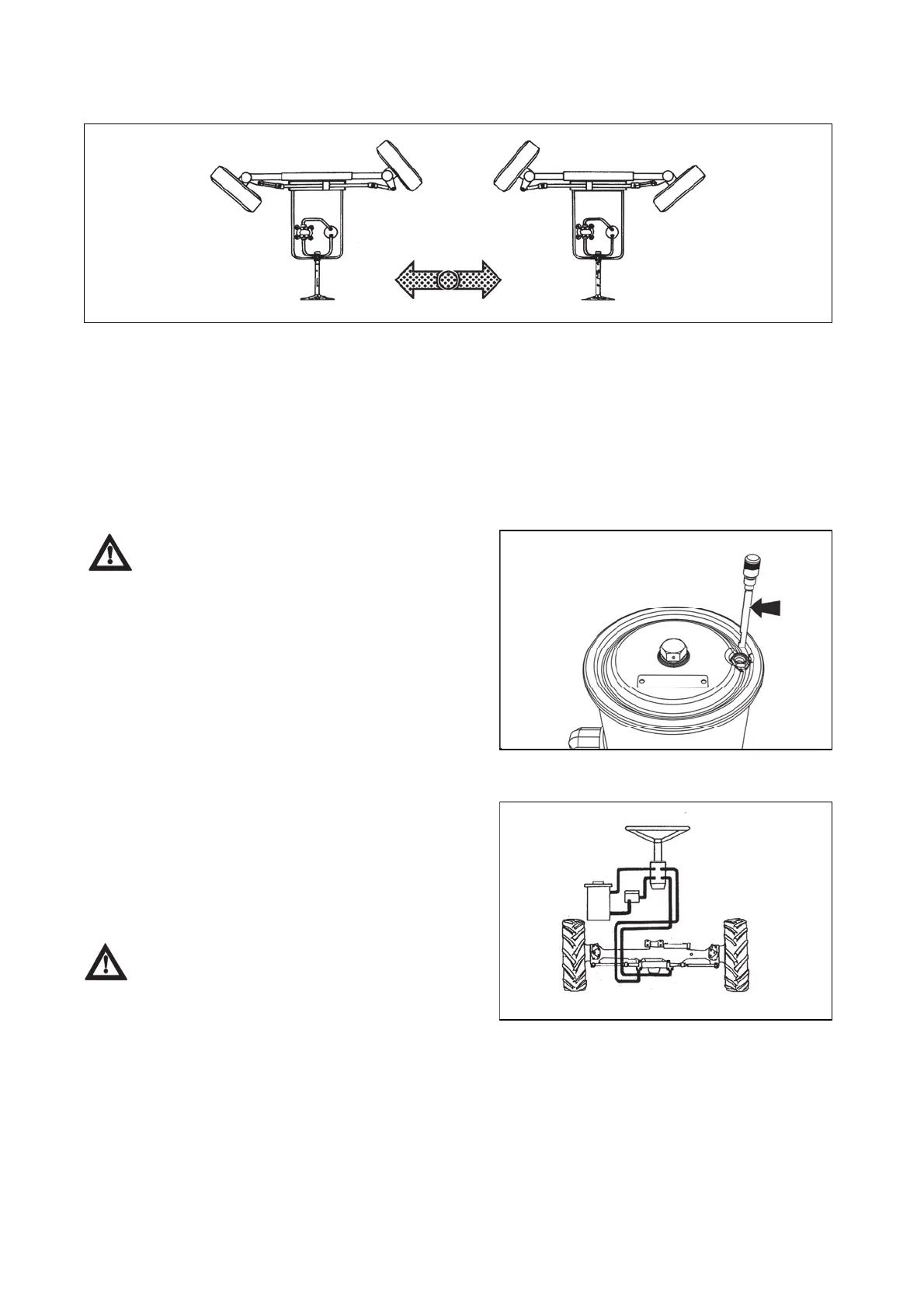enting hydraulic circuit of hydrostatic steerin
E722
1. secure the tractor against movement and lift the front axle
2. start the engine and allow it to run for approximately 1 minute in idle run
3. turn the steering wheel several times to both sides with idle run
4. with maximum engine revolutions, turn the steering wheel 3 times alternately slowly and quickly to both
sides to restricting wheel stop
5. stop the engine
6. after completing the venting check or replenish the oil level to control gauge line. Check the tightness of all
oints and hydraulic circuit guide-ways of hydrostatic steering
7. lower the tractor down to front wheels
Replacing the hoses of hydrostatic steering
Monitor oil level in the tank with all hydrostatic
steering venting steps to prevent air sucking to the
system of steering.
PGPPN147
Hoses need to be replaced four years from the date of
their manufacture (date is given on their surface) or after
working 3,500 hours with tractor, or right after learning the
symptoms of their damage (hose, local swelling,
penetration of working medium around endpoints and
hose surface, wrapping damage by mechanical smear to
a metallic body, damage to external buckle braid with low-
pressure hoses).
If a pump gets damaged or if the engine is at
standstill, steerability is observed, but the force on
the steering wheel increases. It is possible to get to
the nearest place where repairs can be done with
lowered speed. The steering wheel must not be held
in the positions of extreme wheel locks for longn
(maximum time is 20 sec.), otherwise there is
excessive oil heating in hydrostatic steering circuit.
G719
